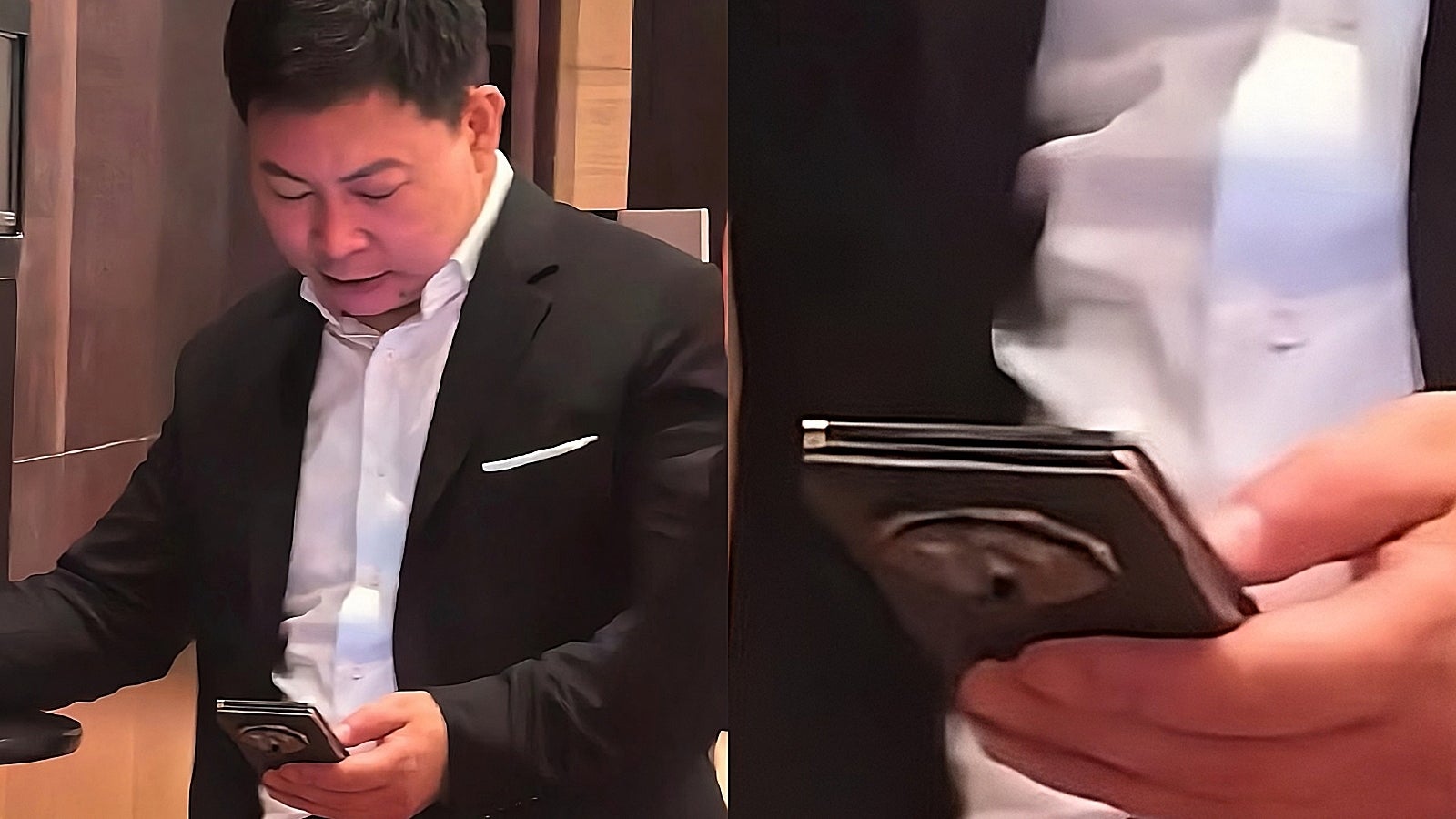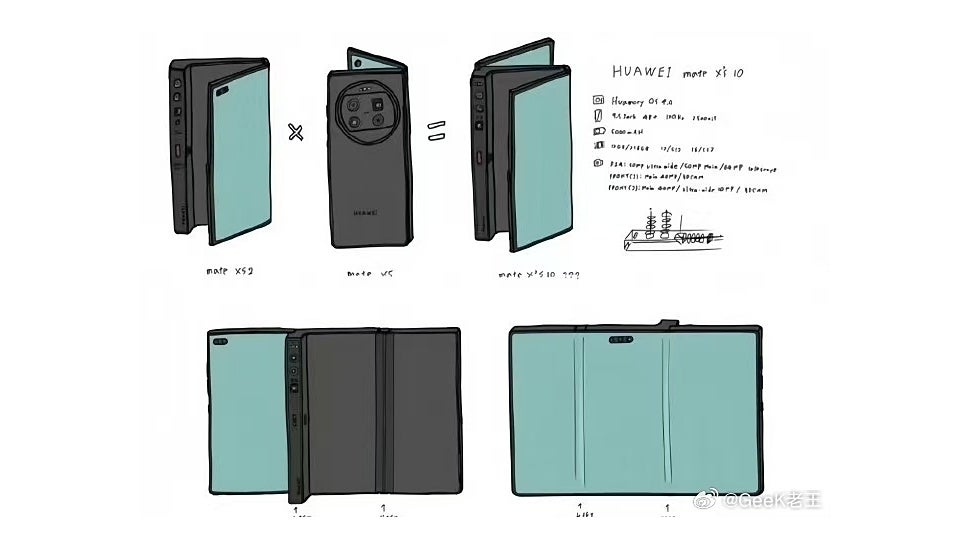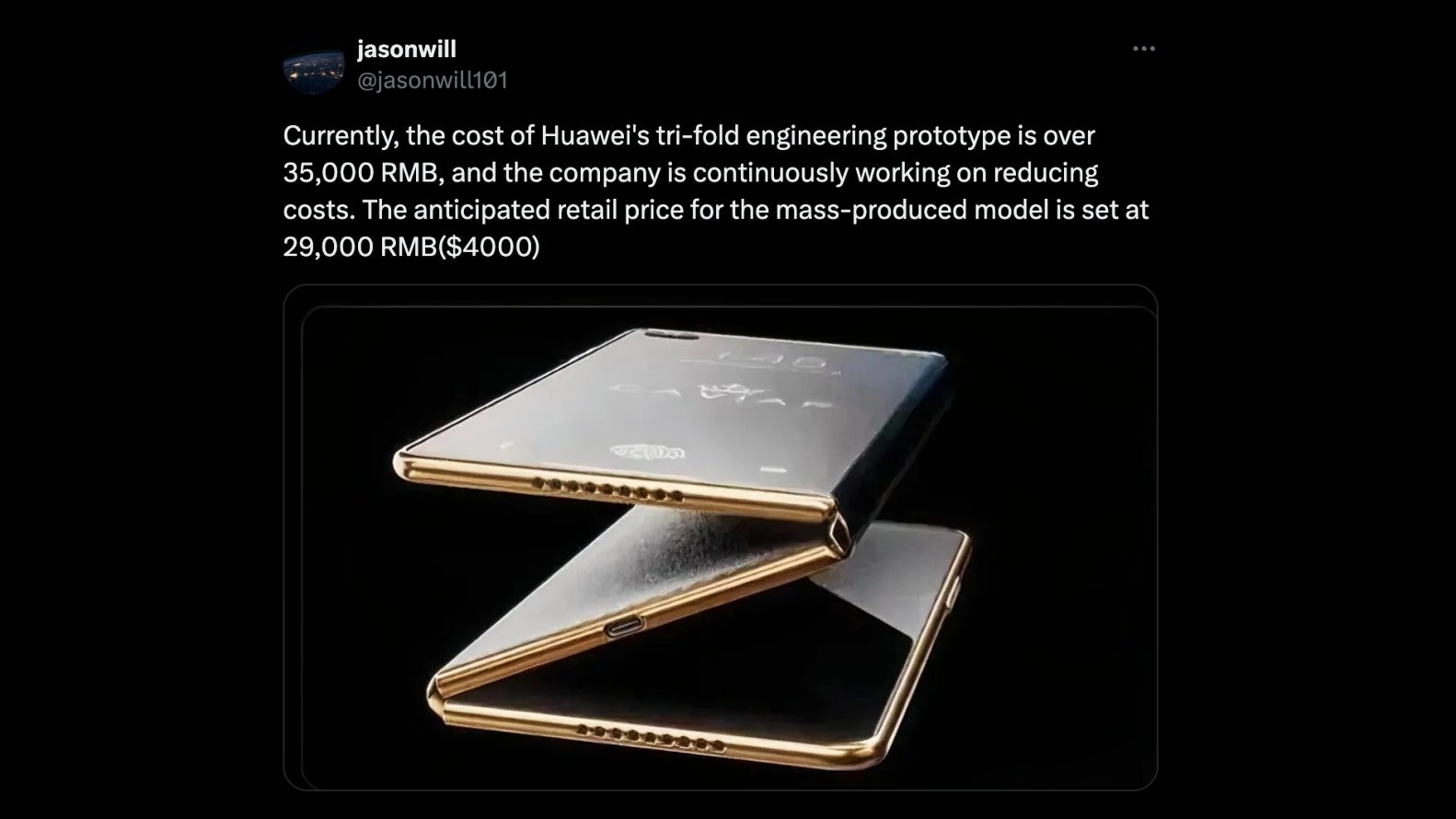In fact, Huawei’s latest ambition is nothing short of groundbreaking with the next mountain to climb being a foldable phone that folds in three!
At first glance, I believe the idea seems quite simple – take the existing concept of folding phones and make them as wide as a “normal tablet”… Then fold it in three so it resembles a “normal phone” – surely, easier said than done.
Anyway, this is exactly what Huawei appears to be working on, with the rumors pointing towards a launch as early as Q4 of this year – a bold goal that could change how we think about foldable phones very soon.
Huawei CEO spotted using groundbreaking “trifold” prototype on a train, but are we really ready to jump on that wagon?

Huawei is preparing to launch the most unique smartphone in recent years. It folds… in three.
So, why would Huawei pursue such a design? The primary reason seems to be about providing a better screen for multitasking and media consumption. Imagine being able to run three full-sized apps side by side, without having to compromise on screen space or orientation.
For anyone who juggles multiple tasks on their phone, this could be a game-changer. Whether you’re taking notes while watching a video or keeping an eye on your email while browsing the web, a tri-folding design could provide a more seamless multitasking experience.
But perhaps the biggest draw of this design would be its potential for watching videos and movies. A larger, wider display would make for a more immersive viewing experience, bringing your favorite films and shows to life in a way that’s simply not possible on current foldable phones. The prospect of having a device that functions as a full-sized tablet when unfolded, yet still fits in your pocket, is undeniably appealing.


A more recent snap of Huawei’s CEO using what appears to be a surprisingly thin tri-folding phone.
There are more potential benefits to this design. One of the most intriguing is the possibility of a longer battery life. The image is upscaled and, obviously, of poor quality.
Moreover, as mentioned earlier, the device would be amazing for watching movies. The wider screen would be ideal for viewing content in its intended aspect ratio, eliminating the need for black bars or awkward cropping. And of course, the ability to multitask with three “normal size” apps side by side is a clear advantage for power users who rely on their phone for work, play, and everything in between.
Huawei’s “trifold” might be the first phone that turns into a “real tablet”. but real tablets have real drawbacks compared to phones


Weight and thickness have been the biggest challenges for folding phones from day one, and this will be even more true for a foldable that folds in three.
However, despite all the exciting doors the “trifold” could open, I can’t help but wonder if the pros are enough to justify the cons that might come with this form-factor.
For one, it’s hard to imagine how Huawei could make a folding phone that folds in three but keep as thin and light as the folding phones we have today.
The current trend in foldable smartphones, like the Galaxy Z Fold 6, is “slimmer and lighter”. Meanwhile, introducing a tri-fold design would almost certainly result in a device that’s significantly thicker and heavier, which could be a deal-breaker for many users.
For comparison, the Galaxy Z Fold 6 already weighs around 240 grams, and adding more screen real estate, and a third battery, would undoubtedly make the device heavier.
A thicker, heavier folding phone will (of course) be more difficult to carry around, less comfortable to hold, and could potentially limit the types of cases and accessories you can use.
Can you get good battery life with a “trifold” phone with a 10-inch, high-refresh-rate display, and super-thin batteries?
Battery life is another point of concern. While the idea of three separate battery cells sounds promising, it’s important to remember that these batteries will most likely be very thin.
And since the phone would be “mostly screen” (likely 10-inches), Huawei might struggle to balance out the endurance when using the entire display.
This could mean that despite having multiple batteries, the device might still need to be charged frequently – particularly if you’re using it for demanding tasks like streaming video or running multiple apps simultaneously.
Of course, it’s possible Huawei might make use of high-density batteries (which are still new but on the rise now), and make up for the lack of space.
Can Huawei make a durable “trifold” foldable from the first try?
And, of course, there’s also the issue of sheer durability…In a traditional folding phone, the screen is protected when the device is closed. But in Huawei’s tri-fold design, the back of the phone would essentially be the display.
This could make the device more prone to scratches, cracks, and other forms of damage. And since the screen would be such a critical part of the device’s functionality, any damage could be more than just an inconvenience.
Rumored to start at $4,000, Huawei’ “trifold” won’t be an instant hit, but it will show Samsung and Apple what real innovation looks like


Let’s hope the rumored $4,000 starting price is a joke.
Rumored to start at an equivalent of $4,000, the Huawei “trifold” would be unattainable for the vast majority of people – in China or elsewhere.
In the end, should phones that fold in three exist? Absolutely! The idea is innovative, and it represents the kind of forward-thinking that has always driven the smartphone industry ahead. That being said, I’m not totally sold on the idea just yet.
While there are clear benefits to the design, there are also significant challenges that need to be addressed before a tri-folding phone can become a practical option for everyday use.
Huawei’s ambition is admirable, but only time will tell if they can overcome the hurdles and deliver a device that truly changes the game. Until then, I’ll be watching closely, but with a healthy dose of scepticism. However, I must give Huawei points for trying to innovate!
While Samsung has been stuck with virtually the same Galaxy Z Fold design for the past 4 years, Huawei has made an outward folding phone, an inward folding phone, and now about to launch the first-ever phone that folds in three. That’s what real innovation looks like!

